New Amsterdam Red Light District Tour Ban Does Not Allow Tours
Posted on: février 14, 2020
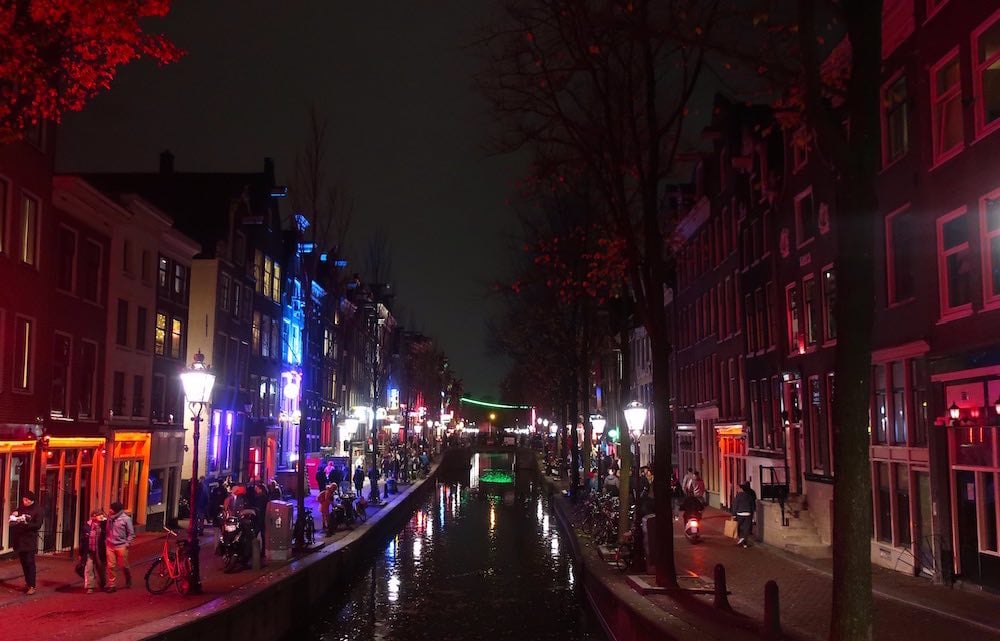
Amsterdam Red Light District Tour Ban Does Not Allow Tours From 1 April 2020
It will NOT be possible to go on a tour in Amsterdam Red Light District from April, 1st 2020.
A few things will change in Amsterdam city centre from April 1st, this year. There’s no complete Amsterdam Red Light District tour ban. Just some things will change. It is as follow:
With an exemption/license from the City of Amsterdam (which our guides have) it will still be possible to give guided tours for groups up to 15 participants in Amsterdam’s city district – also in the Red Light District. This used to be 20. From the 1st of April 2020, guided tours will not be permitted to walk on streets with window brothels. However there are many other streets in the area which don’t contain windows brothels and where people can still be educated about the area. One can still be educated about legal prostitution, the Red Light District, Amsterdam and Dutch culture. On these streets it’s still allowed: Warmoesstraat., Zeedijk, Nieuwmarkt, Oudezijds Kolk, Beursplein, Geldersekade, Papenburgsteeg, Oudebrugsteeg & Nieuwebrugsteeg.
And, there are a few other exceptions…

What are the new tour rules from 1 April 2020 in Amsterdam?
- Guided tour groups may consist of no more than 15 participants. An exemption is not required for groups of up to 4 people.
- Tours can start from 9 am and must finish by 10 pm at the latest.
- Tours are not permitted to pass window brothels.
- Small tours with 4 attendees can still go everywhere in Amsterdam – also on streets with window brothels.
- Recruiting participants in public places is prohibited.
- Guides must prevent participants from loitering in busy places, including entrances to shops, houses, or bars and restaurants during opening hours.
- No sound amplification equipment may be used during the tour.
- No drugs or alcohol may be consumed during the tour.
- Before the tour begins, the guide must instruct participants to show respect to local residents, travailleuses du sexe and businesses.
- A tour group must not stop at the same place or move around together with another tour group in such a way that a larger group is formed.
- Shouting and loud noise are prohibited.
- Guides must wear a badge clearly identifying them and the company they work for.
- Taxes must be paid for a guided tour or city tour: the Entertainment Tax.
The last local law (mentioned above) was implemented on 1 January 2020. Since then, Dutch and foreign tourists need to pay entertainment tax when being part of a city tour in Amsterdam.

The Oudezijds Achterburgwal is the famous street of Amsterdam’s Red Light District.
What is still allowed for tours in Amsterdam?
Amsterdam’s Red Light District area – a.k.a. De Wallen – has many streets where there are no window brothels. For example the Warmoesstraat, the Zeedijk street, Nieuwmarkt, the Geldersekade, Beursplein, Stormsteeg, Kloveniersburgwal, Beursstraat, Oudezijds Kolk. This is where guided tours can still go after the 1st of April 2020. A map of Amsterdam Red Light District with approved and restricted streets is shown below.

Tours can still go here, on the Geldersekade, in the Red Light District.
When the “Amsterdam Red Light District tour ban” will be introduced on April 1st, 2020 it will still be possible to do tours on the streets mentioned above. One can still be educated by licensed guides about the Red Light District, Dutch culture, Amsterdam’s history and also about legal sex work. There are a lot of ambiguities about sex work. Many visitors want to learn more about this. An Amsterdam Red Light District tour with a licensed & knowledgeable guide provides a better insight into this old, mysterious profession and ‘De Wallen’ itself. Teachers and instructors are not part of the new “Amsterdam Red Light District tour ban” and can still provide guided tours throughout the area (including the streets with window brothels). In that case it concerns people who usually do not get paid for the tour.
Amsterdam Red Light District Tour Ban Map
The map below displays Amsterdam’s Red Light District with the streets where tours can and can not be hosted from 1 April 2020:

Green = allowed to host tours. Red = not allowed to host tours.
Escorting Groups in Amsterdam
Another exemption:
From April, 1st 2020 it will also be allowed to escort groups in Amsterdam’s Red Light District from one location to the other. For example from a touring car stop to a museum, restaurant, attraction or hotel. Or from Dam Square, through the Red Light District, to Casa Rosso for example. In that case, the host have to be able to show a reservation for the location that the group is going to.
Definition of Escorting
The definition of escorting was described by the City of Amsterdam as follow: It means that the group is walking directly from A to B without standing still or the host is telling about the surroundings. Hosts do not need a license/exemption (from the City of Amsterdam) for escorting groups. They must be able to show the reservation of the destination. This escorting-policy only applies within the city centre of Amsterdam, including the Red Light District.

After 1 April 2020, it will still be possible to guide tours in Amsterdam’s Chinatown – also located in the Red Light District.
The temple above is situated on the Zeedijk. A street in the Red Light District of Amsterdam.
So, the new Amsterdam Red Light District Tour ban is not an actual/complete ban. The new policy made by the Municipality of Amsterdam just changed a few things in the exciting local laws that are stated in the exemption system (locally known as an ‘ontheffingsstelsel’)
Other Ways To Get A Tour
In addition to the two ways mentioned above to go on a tour, it is also possible to get a tour with an app.
With the app Amsterdam Audio Tours you can discover the Red Light District on your schedule, at your pass. Navigate De Wallen area with the help of GPS, virtual tour guide Sophie and 22 experts that you’ll ‘meet’ along the way. One of the main benefits of this app is that you can now get a guided tour whenever you want, with whoever you want. Walk alongside the best narrators and hear all the interesting stories that are part of Amsterdam’s Red Light District. Had enough? Just press pause and pick up after having a rest in one the many great cafes in the area.
The experts in Amsterdam Audio Tour: local police officers, a Romanian prostitute, historians, entrepreneurs, residents, drug consultants, sociologists, sex-historians, a male sex worker, the Fokkens twins, the Salvation Army, a smart shop owner and many others. You can listen to the audio tour in the Red Light District or just at home as a podcast.
Amsterdam Audio Tours – stories that take you places.
GET THE APP >
Why Are These Laws Implemented in Amsterdam?
The City of Amsterdam will implement these laws because:
- It wants to reduce nuisance, such as noise, by reducing the crowds on the streets.
- It wants to create more space on the streets.
- It does not find it respectful and appropriate to host tours alongside the window brothels and to educate people about legal sex work.
The municipality can not ban groups of people in Amsterdam. However, they can ban or restrict groups of people which are part of a tour, hosted by a guide. That’s why they came up with these new local laws.
Red Light District Research
In 2018, the municipality of Amsterdam commissioned a study by the Strabo research agency. Through surveys, Strabo questioned 203 respondents (residents, entrepreneurs & sex workers) about the Red Light District and tours in the area. 14 of these respondents worked in the sex industry, of which only 10 travailleuses du sexe. Amsterdam’s Red Light District area (De Burgwallen Oude-Zijde) counts currently 4.295 residents, 292 window brothels and an estimated 350 sex workers (who work in day and night shifts). In other words: 2.85% of all prostitutes participated in this study.
There is strong doubt about the reliability and correctness of Strabo’s research. During a study with surveys it is essential that the sample size is correct. When the total population size of sex workers is 350, and when the confidence level should be 95%, then the sample size must be at least 184 sex workers. But only 10 sex workers participated in Strabo’s research. Almost 18 times too little.

Nevertheless, despite its low respondents, this study was still decisive for the policy of the Red Light District. The Amsterdam Red Light District tour ban is based on this rapport with associated surveys of just 10 sex workers.
Owner Research Company Against Prostitution
In the same year of the study (2018) the co-owner of this research agency (Strabo) wrote publicly in Dutch newspaper Parool that he is against prostitution. He wrote: “Also prohibit prostitution in the Red Light District…Close the coffeeshops. Also reduce sex in the Red Light District.” (source)
Counter Arguments On New Laws in Amsterdam Red Light District
- The rules for tours that were implemented in April 2019 stated that from then on, tours with more than four persons were not allowed in the Red Light District after 7 pm. Before April 2019, tours had to be ended by 11 pm. That strict rule already decreased nuisance in the district. Now the City of Amsterdam goes one step further by banning certain streets for tours. Unnecessary.
- Tour guides explain the etiquette of Amsterdam’s Red Light District. They educate people on the do’s and don’ts. Good guides are ambassadors of the area.
- In general, the people in the tours are not the ones who cause nuisance in the Red Light District. They join the tours because they are interested in learning more about legal sex work, Dutch culture, Amsterdam’s history and ‘De Wallen’. They do not scream, they are not stoned or drunk, they just follow the guide peacefully from A to B.
- The experienced nuisance in the area is caused by individual visitors and disorganised groups, who see the Red Light District as an amusement park. The customers of informative tours generally behave calmly and respectfully.
- Guided tours in Amsterdam’s Red Light District can actually contribute to a more positive image for sex workers and show the tolerance of Amsterdam.
- The vast majority of sex workers have indicated that they do not experience negative experiences from guided tours.
- In the Strabo research only 10 sex workers were asked about their opinion. The new policy of the City of Amsterdam is based on this rapport.
- Without good reasons, a distinction is made between unaccompanied groups, individual visitors and guided groups. Stag-parties (bachelor-groups) can still visit the area in big groups without a guide.
- There is no evidence that a group of 15 people causes less nuisance than 20 people and it is unclear how this number came about. Moreover there is no affiliation with the original group size of max. 25 people, introduced during the convenant-agreement in 2017. The new policy in Amsterdam will lead to more smaller groups or an increase in groups without a guide.
- By introducing this Amsterdam Red Light District tour ban, people will miss important cultural and historical places of Amsterdam.
- With a mandatory whisper system or audio tour the Amsterdam Red Light District tour ban would not be necessary. A guide group could then still be larger than 15 people. In that case, the guide does not have to stand still and can talk while walking, so there is no congestion.
- The Oude Kerk (Old Church) is now in the prohibition zone of the Amsterdam Red Light District tour ban, while that is an icon for Amsterdam.
- The new forbidden area for tours is too large and unnecessarily relates to places in the city where it is not crowded at all.
- It is unfair that all other companies and organisations can freely practice their profession in the Red Light District and that guides are excluded from this.

Amsterdam Red Light District New Laws
Over the years the municipality of Amsterdam introduced new local laws. It all started with Project 1012 – named after the zipcode of the Red Light District.
2007: Project 1012 Wallen
In 2007, the City of Amsterdam decided to decrease Amsterdam’s Red Light District (Wallen) by closing window brothels and coffeeshops. A gentrification-plan (called Project 1012) led by former alderman Lodewijk Asscher, ensured that 112 window brothels were bought with tax money from brothel operators, and eventually closed down.

Former alderman Lodewijk Asscher – responsible for Project 1012 – in the Red Light District.
The municipality ensured that the Red Light District became much smaller, by decreasing the windows brothels in the area from 404 to a total number of 292 windows. The spread of people also deteriorated. The largest Dutch daily morning newspaper De Telegraaf claimed that Project 1012 costed 108 million euros (source). One window brothel owner (Charles Geerts) received 25 million euro tax money for selling his 18 properties with 70 window brothels to the City of Amsterdam (source). In other words: 357.142,86 euro per window brothel.
After that, most of these windows were changed into art-galleries, fashion shops, waffle-stores, pop-up-shops and whatnot. The local government wanted more variety.

An example of gentrification in the area: An Upcycle Store with recycles products.
However, most visitors in Amsterdam Red Light District are not interested in the products of these new shops, so it seemed. These relatively unpopular companies can continue to exist despite the fact that they make little profit because they have low rental costs. Cooperatives, which are partly funded by the (local) government, ensure these low rental costs.
There used to be several window brothels in the building where The Upcycle Store (shown in the picture above) is located at the moment.
Amsterdam Tourism Statistics
When Project 1012 was launched, the number of visitors in Amsterdam already increasing. In 2006 Amsterdam had 11 million visitors. In 2013, the company IAmsterdam was founded. This is the marketing company of the city. Since 2013 the city started to promote itself considerably through this organization. The city wanted to get more tourists. This organization also placed the letters Iamsterdam on the Museum Square, in front of the Rijksmuseum.

In 2018 Amsterdam had 18 million visitors. Partly due to the activities of the marketing company of Amsterdam. In other words: Within 11 years tourism in Amsterdam increased by 64%. Project 1012 ensured that the number of coffee shops and window brothels in the Red Light District decreased considerably during that period.
Conclusion: more visitors came to a smaller area. This was one of the main reasons why nuisance in the area was more noticeable.
Rekenkamer Project 1012
The official Amsterdam Audit Office (Dutch: Amsterdamse Rekenkamer) analysed the gentrification-plan Project 1012 and concluded that the project failed (source).
2016: Debate About Tours in Amsterdam Red Light District
Since 2016, the municipality of Amsterdam has been talking with guides, tour organisations, a few sex workers and residents about tours. In 2016, the municipality of Amsterdam started discussions with stakeholders about guided tours in the Red Light District. In 2017, this resulted in making agreements in the form of a Red Light District Covenant Covenant.

2017: Covenant Tours in Amsterdam Red Light District
In 2017, the Red Light District Tours Covenant with accompanying guidelines was drawn up in consultation with tour operators, the local police, representatives of sex workers, other stakeholders and residents. More than 50 parties signed the covenant. We liked this Dutch approach and we were one of the first to sign the convenant to improve things in the Red Light District together with others.
2018: Regulation Policy of Guided Tours in Amsterdam Red Light District
The local parties agreed in the covenant an evaluation would be carried out six months after signing. This showed that the vast majority of the covenant partners and parties who had heard of the covenant adhered to the agreements. However, some of the 4.295 local residents still experienced some inconvenience from groups in this neighbourhood that receive more than 3.1 million visitors annually. Therefore a reason to adopt stricter policies. This was partly because some large parties did not participate in the covenant.
Since April 1, 2018, there has been an exemption policy in the Red Light District and is for guides not allowed to give a tour in the Red Light District without exemption1. Various conditions are attached to the exemption, such as a maximum group size of twenty people. The conditions are largely the same as the agreements made in the covenant and written on the back of the exemptions – which the guides must carry.
2019: Amsterdam Red Light District Tour Ban after 7 pm
At the beginning of 2019, due to the large crowds in the Red Light District, it became suddenly forbidden to give guided tours in the exemption area (2018) after 7 pm after 1 April 2019 after 7 pm. This applied only for tour groups with 5 attendees or more. Red Light District tours with a maximum of 4 attendees may still go through the area after 7 pm because these small groups are not part of the exemption system.
2020: Amsterdam Red Light District Tour Ban On Certain Streets
On Thursday, February 13, 2020, the municipality of Amsterdam sent an email to all touroperators and guides (in their database) containing the final decision and the associated details regarding the so-called new Amsterdam Red Light District Tour ban. In this email (with attachments) it stated that the maximum allowed number of participants in guided tours in the city centre will be decreased from 15. And it showed that guided tours within and around the Red Light District area are still allowed on certain streets.
Which streets are still allowed to host guided tours in Amsterdam Red Light District?
The city of Amsterdam also indicated that tours in the Red Light District are still permitted on certain streets in the area, such as Warmoesstraat., Zeedijk, Nieuwmarkt, Oudezijds Kolk, Beursplein, Geldersekade, Papenburgsteeg, Oudebrugsteeg & Nieuwebrugsteeg. All these streets are located in the Red Light District.
What do others say about the new local laws in Amsterdam?
PROUD – interest group for sex workers: “We are against the prohibition of group tours in the Red Light District. We name three arguments:
- Proud was not consulted by the municipality or Strabo and had to find out via the media.
- Regulated tours can contribute to the quality of life in the city center. Guides always inform the participants how to behave.
- Tourists are an important source of income for sex workers. The municipality’s letter of 12 March 2019 states that they want to introduce a ban, without the municipality asking the sex workers for their opinion. This is a measure against the interests of sex workers” (Source)
Prostitution Information Center asked the city council to reconsider the new local law, to allow tours by professional organisations, to change the local legislation to be able to enforce certain behaviour and consult the stakeholders in the area by conducting proper & thorough research. (Source)

The chairman of Business Association Amsterdam Red Light District.
Business Association Amsterdam’s Red Light District: “The nuisance in the Red Light District is not caused by organised informative tours, but by unaccompanied groups. Drunk bachelor parties for example. It is very disappointing that the municipality of Amsterdam is not using a policy to improve the Red Light District. They could actually use good guides to inform people about the etiquette in the Red Light District.”
Tim – guide: It’s a loss for Amsterdam the lessons of freedom that can be taught in the unique, old part of town.
Henri Struylaart – member of the Dutch Guide Organization: Local guides are ambassadors for Amsterdam. Not being able to show guests around in Amsterdam’s unique area and to tell about local habits, is a big loss for the city.

Conclusion New Amsterdam Red Light District Tour Ban
Yes, From April 1st, 2020 it will still be possible to get a Red Light District tour with a maximum of 15 persons via certain streets. Also, when a host is able to show a reservation for a group for an attraction (or a hotel) in the area, then he/she can still escort the group to the destination within Amsterdam’s Red Light District.
BOOK A TOUR >
Others who read this also read Amsterdam’s Red Light District Map With Window Brothels and Amsterdam Red Light District Wiki Page



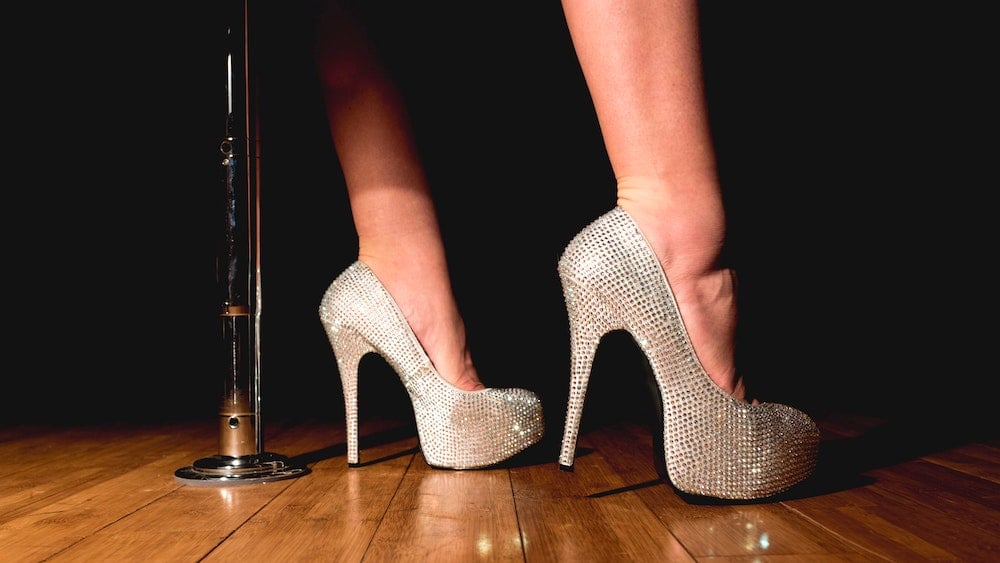
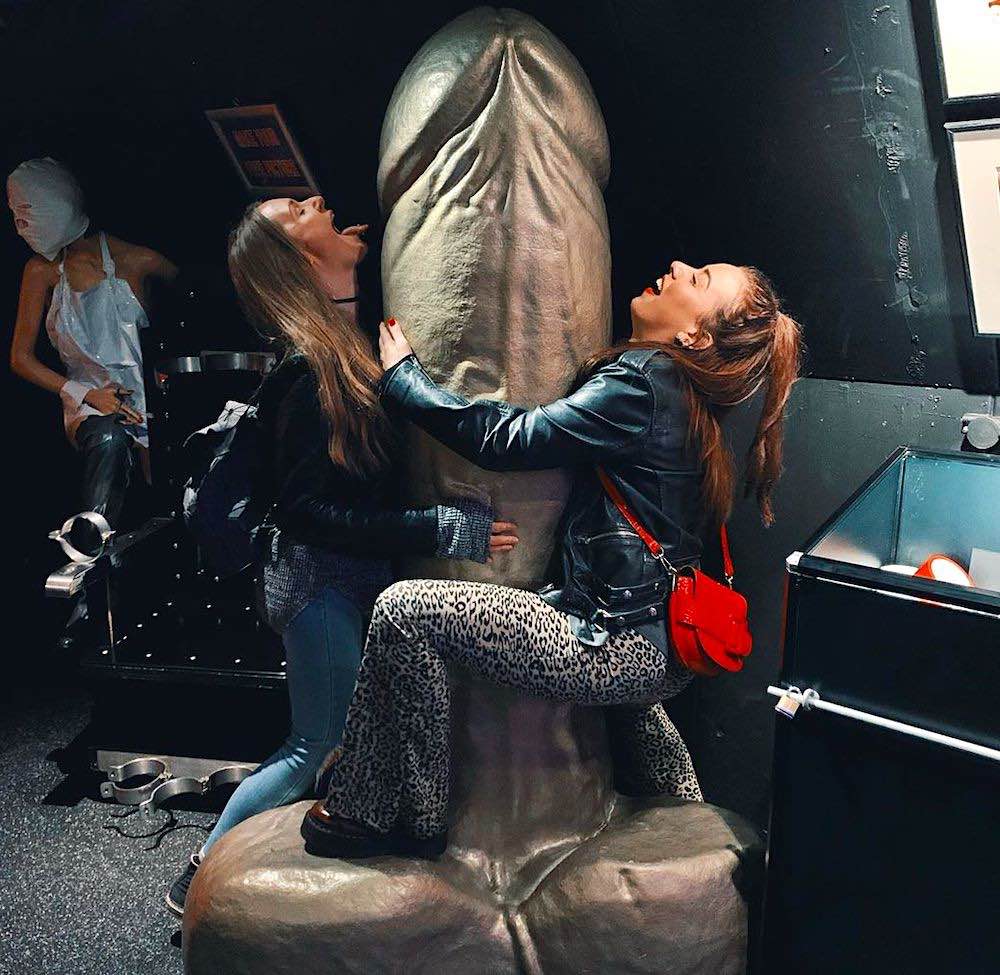

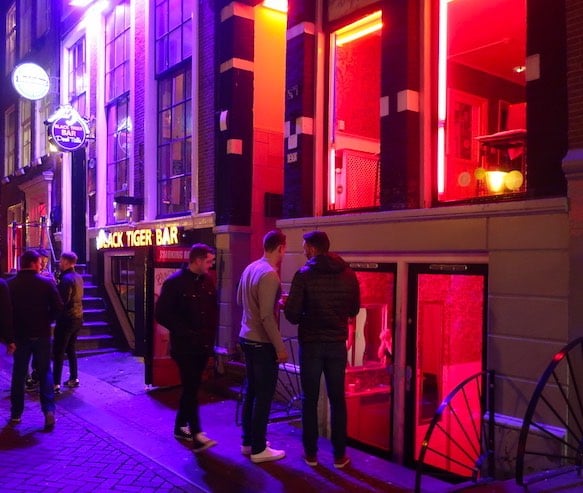

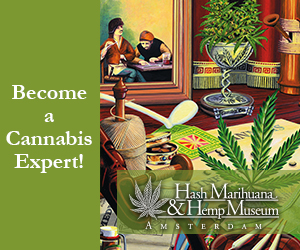
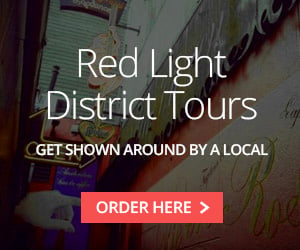

[…] There seems to have been quite a few new rules regarding tours, see this article https://www.amsterdamredlightdistricttour.com/news/amsterdam-red-light-district-tour-ban/. It will be interesting to see what PIC thinks of […]
[…] Available at: https://www.amsterdamredlightdistricttour.com/news/amsterdam-red-light-district-tour-ban/ […]